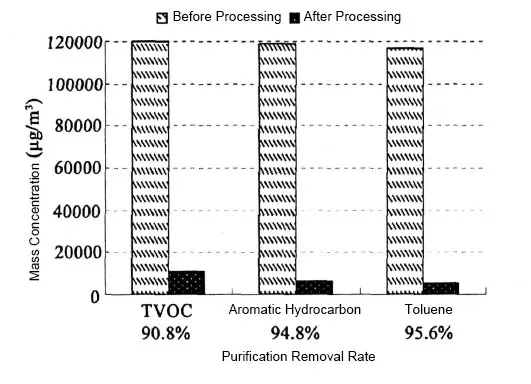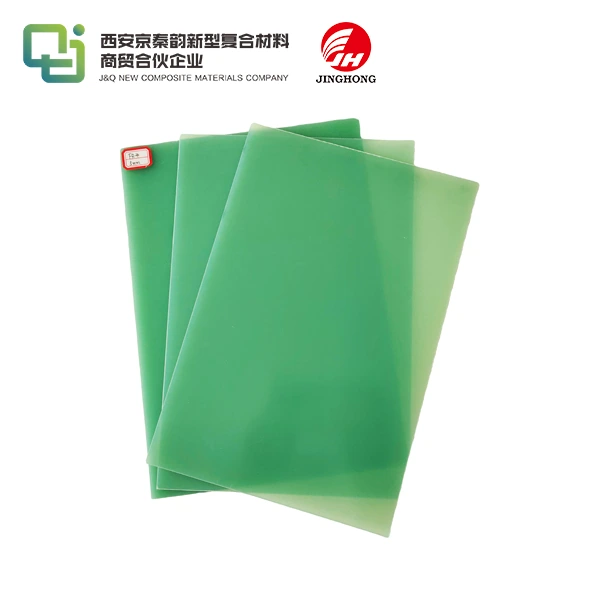Treatment and Control of Exhaust Gas Emission in Sizing and Drying of 3240 epoxy sheet
2022-09-20
1. Introduction
The development of modern polymer chemistry has promoted the emergence of various synthetic polymer materials. Based on its special molecular structure, polymer materials have the advantages of voltage resistance, high strength, long service life, good mechanical properties, etc.
3240 epoxy sheet is one of the important insulating materials with high mechanical and dielectric properties. It is suitable for use as insulating structural parts in motors and electrical equipment, and can be used in humid environment and transformer oil. It is made by dipping epoxy phenolic resin on the alkali free glass cloth and drying it. The corresponding production equipment is glue applicator and drying kiln. As the organic solvent in epoxy phenolic resin and diluent volatilizes in a large amount during gluing and drying, with obvious color and serious smell, it is very easy to pollute the surrounding environment. In the relocation and construction project of Shanghai Insulation Materials Factory, in view of this serious environmental pollution, catalytic oxidation purification was adopted to treat the adhesive coating and drying tail gas and achieve ideal results
2. Treatment process
Shanghai Insulation Materials Factory has five glue coating and drying production lines, with a total tail gas volume of 28 790 m}/h. The tail gas enters the waste gas purification device through the prefilter, explosion-proof fan and flame arrester, as shown in Figure 1

The waste gas purification device is composed of heat exchanger, natural gas heater, catalytic chamber, electric control cabinet, etc. Its core structure is shown in Figure 2. When the organic waste gas enters the device, it first goes to the heat exchanger, where the temperature of the organic waste gas is raised as much as possible, and then it is sent to the natural gas heater, where the waste gas is heated to the appropriate catalytic combustion temperature through the natural gas combustion heat, and then it enters the catalytic tank for catalytic combustion reaction, so that the organic waste gas is oxidized and decomposed into carbon dioxide and water, and heat is released at the same time. When the concentration of organic waste gas reaches a certain value, the waste heat generated can make the temperature of waste gas reach the decomposition temperature of catalytic combustion through the heat exchanger. At this time, the catalytic combustion device can achieve dynamic heat balance without the need for natural gas auxiliary heating

3. Results and analysis
In order to study the effect of this set of waste gas purification device on the tail gas treatment of adhesive drying on epoxy phenolic glass cloth board and monitor the emission status after the process tail gas treatment, the waste gas purification device will be sampled and analyzed before and after the process tail gas treatment after 2 years of operation
a) Sample collection and analysis
According to the SU M-MA steel tank sampling method specified by the US Environmental Protection Agency for harmful substances in the atmosphere, samples shall be taken for 1h before and after the treatment of glue drying waste gas. The sample is analyzed by gas chromatography/mass spectrometry (GC/MS), and the sample is quantitatively analyzed by PAMS and TO-15 mixed standard gases
b) Composition analysis and evaluation
The sample analysis results showed that 101 VNCs were detected before and after the treatment of production tail gas, and the specific types and quantities were shown in Table 1.
Table 1 Types of VOCs emitted from insulation material production
Type | Alkane | Olefin | Aromatic Hydrocarbon | Alkyne | Halogenated Hydrocarbon | Oxygen/sulfur containing organic matter |
Quantity | 30 | 11 | 16 | 1 | 33 | 10 |
The mass concentration of VOCs detected in the tail gas before treatment is 119.78mg/m3, of which aromatic hydrocarbons account for 99.14%. The type with the highest content of aromatic hydrocarbons is toluene, which accounts for 97.7% of the total VOCs. After treatment, the concentration of VOCs decreases significantly, as shown in Figure 3. After treatment, the mass concentration of VOCs decreased to 11.06mg/m^3, and the mass concentrations of aromatic compounds and toluene decreased to 6.13mg/m^3 and 5.14 mg/m^3 respectively. The set of waste gas purification equipment makes the removal rate of VOCs reach 90.8%, and the removal rates of aromatic hydrocarbons and toluene are 95.6% and 94.8% respectively. After 3. 5 years of equipment operation, the local environmental monitoring station tested the adhesive coating and drying tail gas of this process. The report showed that the removal rate of toluene by this set of waste gas purification system was 95.67%, indicating that the removal rate of VOCs, especially toluene, by this purification system was relatively stable in practical application.

The number of alkanes and halogenated hydrocarbons in VOCs detected from the treated waste gas is the largest, but the mass fraction of aromatic hydrocarbons is the highest, accounting for 55.39% of the total. Toluene is still the species with the highest content, accounting for 46.44% of the total. The concentration of discharged toluene is far lower than the maximum allowable emission concentration (60 mg/m3) of China's Integrated Emission Standard of Air Pollutants (GB 16297-1996).
c) Analysis of photochemical reactivity of tail gas emission
VOCs have complex components, great harm to human body, toxicity and irritation. In addition, most VOCs have photochemical reactivity, which can react with other chemical components in the atmosphere to form secondary pollutants or intermediates with strong chemical activity, thus causing harm to the ecological environment. Therefore, it is of great significance to study the atmospheric photochemical activity of VOCs emitted from the production of insulating materials, the reaction activity and incremental reaction activity of organic compounds with · OH radicals are commonly used to characterize the reaction activity of VOCs in photochemical processes and their contribution to ozone generation. In this paper, the · OH consumption rate method is used to evaluate the impact of VOCs on atmospheric chemical processes. The · OH consumption rate can be obtained from the product of VOCs concentration and · OH consumption rate constant. The rate constant is referred to relevant literature.
Calculate the · OH consumption rate of each VOCs species before and after tail gas treatment. The sum of · OH consumption rate of VOCs before and after treatment is 4691.13 s^-1 and 455.45 s^-1 respectively. It can be seen that the activity of VOCs emission decreased by 90.3% after purification treatment.
For comparative analysis, the VOCs level in the air of a certain place in Shanghai urban area was monitored at the same time. The results show that the · OH consumption rate of VOCs in urban air is 7.52s-1, which indicates that the photochemical activity of VOCs emitted by this process is about 60.6 times of that of urban air. The activity distribution of VOCs species after tail gas purification treatment is mainly divided into four categories: alkanes, aromatics, olefins and others (acetylene and acetone). It can be found from Figure 6 that the · OH consumption rate of toluene and ethylene in all species is much higher than that of other species, accounting for 43.94% and 39.58% of the total · OH consumption rate respectively, accounting for 83.52% of the total activity, these two species are VOCs with the strongest atmospheric chemical reactivity in the process exhaust emissions.

4. Conclusion
The characteristic pollutant in the tail gas of 3240 epoxy sheet is toluene, accounting for 97.7% of the total VOCs. The removal rate of VOCs and toluene in the waste gas after purification treatment is 90.8% and 94.8% respectively. The emission concentration of toluene after treatment is 5.14mg/m3, which is far below the maximum allowable emission limit specified in GB16297-1996. The photochemical reaction activity of VOCs in the treated tail gas decreased by 90.3%, but it was much higher than the corresponding value of urban air. Among them, toluene and ethylene were the main active species, accounting for more than 80%.







